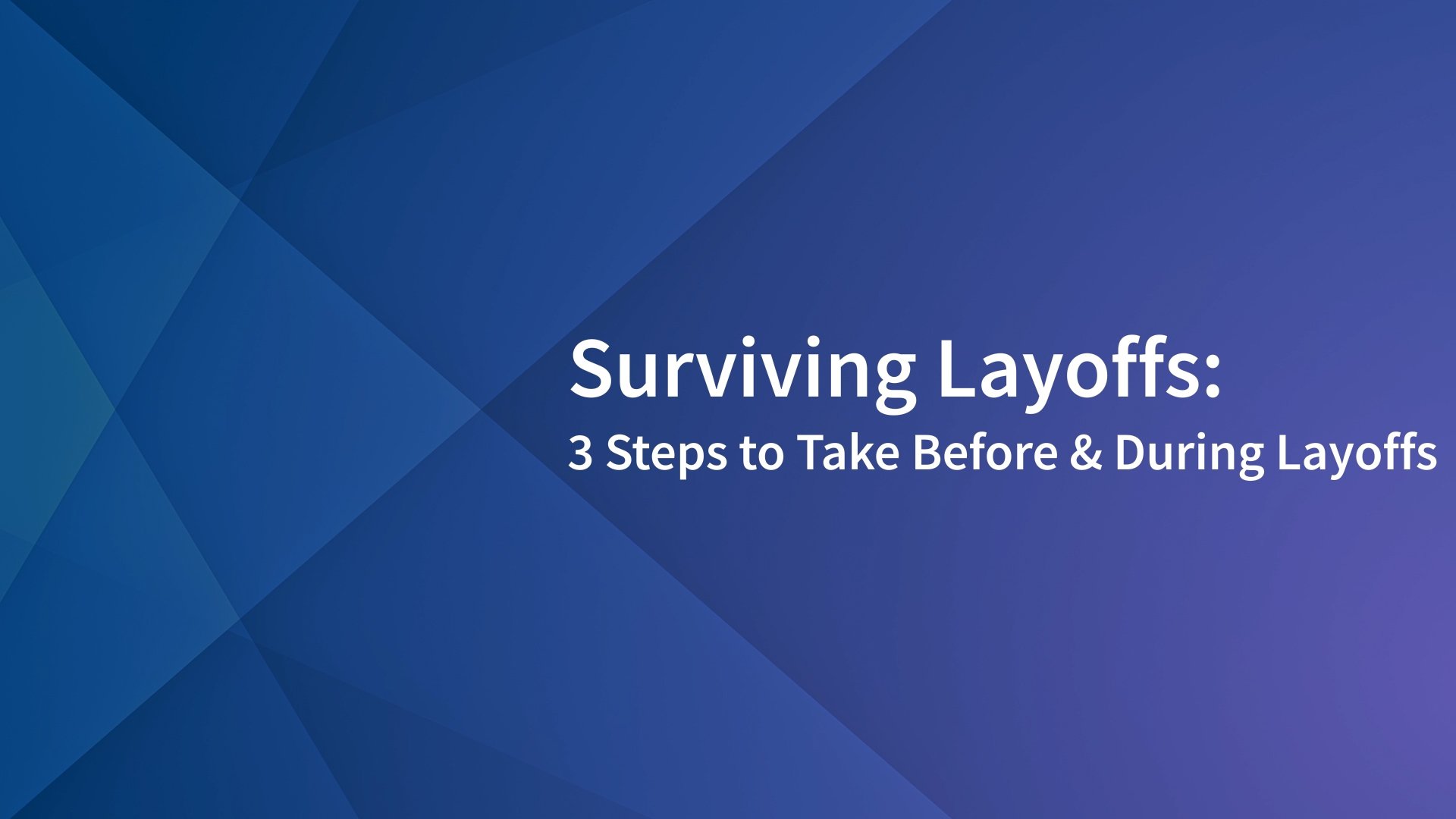Heather Myers, Ph.D., shares three steps to mitigate the impact of layoffs on remaining employees for part three of five in our surviving layoffs series.
Learn how to rebuild relationships post-layoffs in the fourth part of the series here.
ICYMI, for surviving layoffs Heather previously covered:
Watch the full series here.
Transcript:
Hi, my name's Heather Myers, and I’m the Chief Psychology Officer at Traitify.
I’d like to welcome you back to our third video on surviving layoffs. If you missed the first two, no worries. You can find a link to them [here].
In the last video, we discussed the impacts of layoffs on survivors. Fear, anxiety, job insecurity, and guilt lead to lower productivity, less commitment to the organization, and a loss of trust.
So here are some tips for handling the process in a better way to reduce these effects.
First, early notification is key. Once a decision has been made it's best to let people know what they can expect. Many organizations don't do this, because they're afraid that it will have negative impacts if they let people know too soon before the layoffs actually happen. But the research does not bear this out. In fact, advance notice does not typically have negative impacts to the organization. Instead, it leads to better outcomes and better transitions. In fact, by not letting employees know, you're more likely to have it leak out and for employees to be afraid beforehand, without having all of the facts.
Next, remember that fairness reigns supreme. Layoff survivors will respond so much better if they feel that the process of selecting those who will leave was a fair one. So be clear about the process used. Explain it to all employees, not just to those who were let go; and make sure that those surviving the layoffs know what resources have been made available to those who were let go. This way they'll know that your organization cares about the employees that were laid off and has taken steps to make their transition as easy as possible, which will help to alleviate some of the guilt that the survivors feel at being still left in the organization.
Finally, train managers on how to deliver information to those who stay. Employees were less likely to have strong negative emotions and decreases in productivity if they felt that their managers communicated clearly throughout the process, if they trusted their managers, and if they felt supported by their managers every step of the way.
In sum, by communicating early and often, by showing fairness in the process, and encouraging managers to support their employees, your organization can minimize the negative impacts that layoffs will have on remaining employees.
In the next video we’ll talk about how you can rebuild any damaged relationships post-layoffs.
Stay tuned, and we’ll see you soon.
To learn how to survive layoffs by leveraging fast, visual-based assessments, connect with Traitify.
Sources:
- Brockner, J., Davy, J., & Carter, C. (1985). Layoffs, self-esteem, and survivor guilt: Motivational, affective, and attitudinal consequences. Organizational Behavior and Human Decision Processes, 36(2), 229–244. https://doi.org/10.1016/0749-5978(85)90014-7
- Brockner, J., Greenberg, J., Brockner, A., Bortz, J., Davy, J., & Carter, C. (1986). Layoffs, Equity Theory, and Work Performance: Further Evidence of the Impact of Survivor Guilt. Academy of Management Journal, 29(2), 373–384. https://doi.org/10.5465/256193
- Campbell-jamison, F., Worrall, L., & Cooper, C. (2001). Downsizing in Britain and its effects on survivors and their organizations. Anxiety, Stress & Coping, 14(1), 35–58. https://doi.org/10.1080/10615800108248347
- IMPACT Group. (2017). The SMART and Compassionate Guide to Reducing Your Staff [E-book]. https://cdn2.hubspot.net/hubfs/1856621/Reducing_Your_Staff_The_SMART_and_Compassionate_Guide.pdf
- Murphy, M. (2015). Don’t Expect Layoff Survivors to be Grateful. Leadership IQ. https://www.leadershipiq.com/blogs/leadershipiq/29062401-dont-expect-layoff-survivors-to-be-grateful
- Murphy, M. (2019, October 21). How To Help Your Employees Overcome Survivor Guilt After A Layoff. Forbes. https://www.forbes.com/sites/markmurphy/2019/10/22/how-to-help-your-employees-overcome-survivor-guilt-after-a-layoff/#52b201e92edf
- Wolfe, H. (2004). Survivor Syndrome: Key Considerations and Practical Steps. Institute for Employment Studies. https://www.employment-studies.co.uk/system/files/resources/files/mp28.pdf





